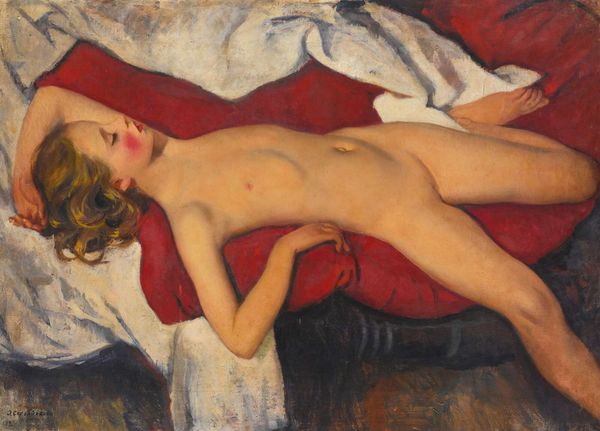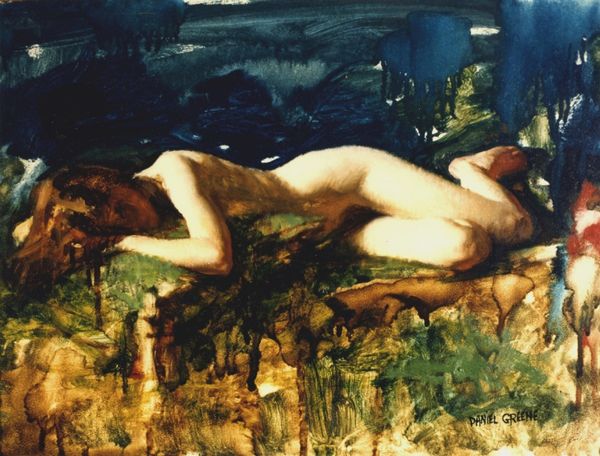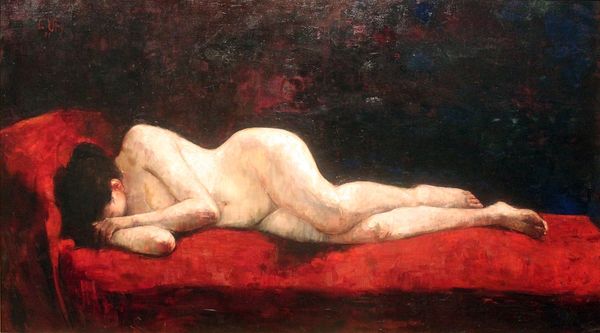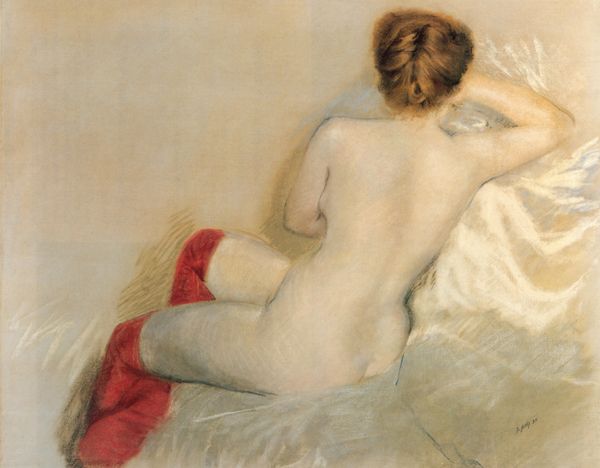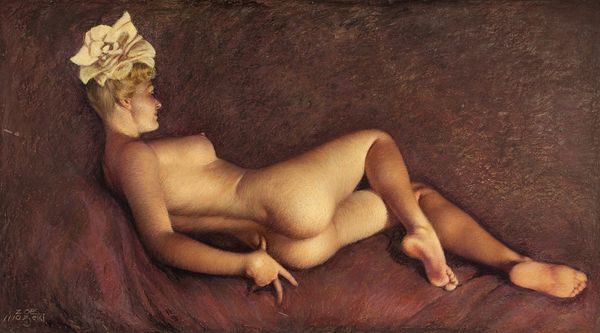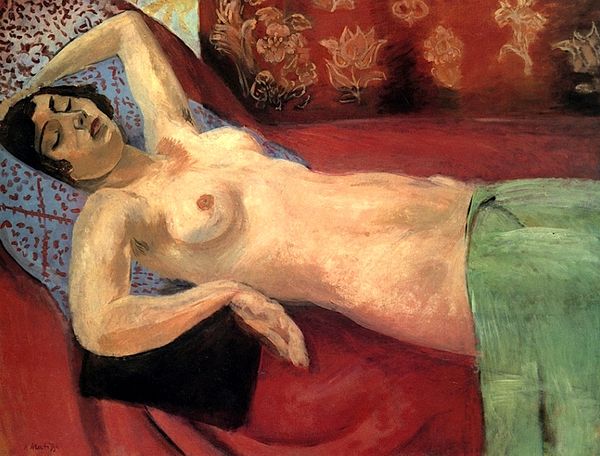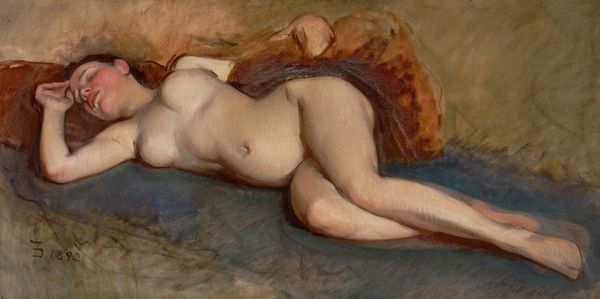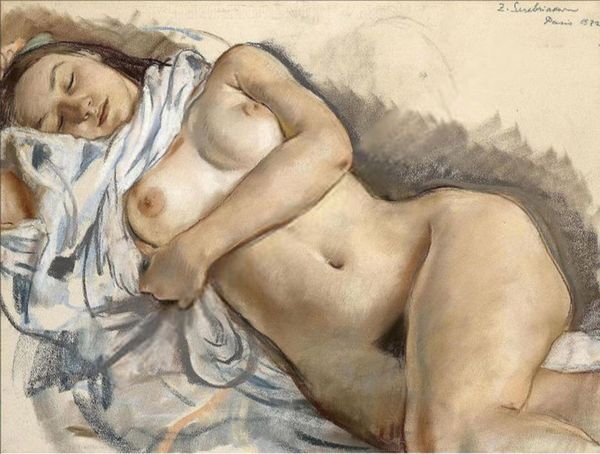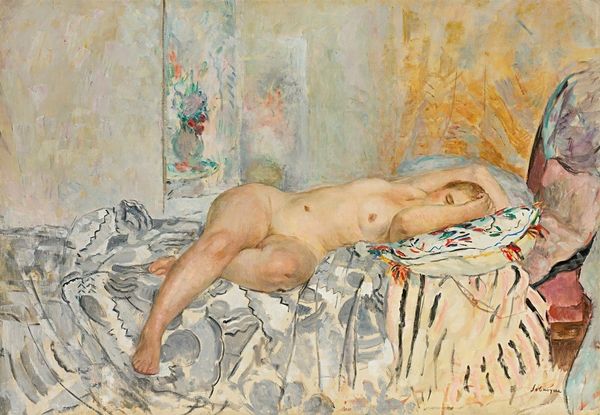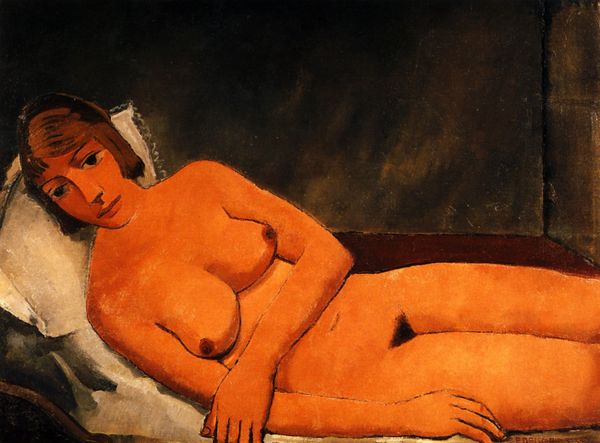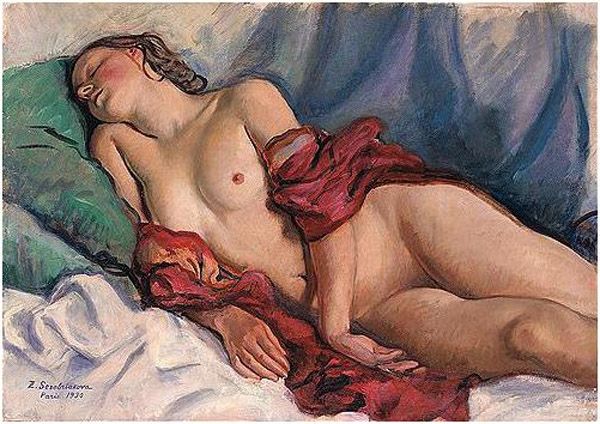
Copyright: Public domain US
Curator: This is Zinaida Serebriakova's "Katyusha," painted in 1920. It's an oil-on-canvas work that offers an intimate look at the artist's subject. Editor: There's an undeniable vulnerability to the painting. The subject’s gaze, while direct, feels somewhat guarded. The palette is soft, yet there's a starkness in the figure's presentation, creating a tension between idealized beauty and unvarnished reality. Curator: It's vital to remember the historical context here. Serebriakova painted this during a tumultuous period in Russian history. After the revolution, she faced immense hardship. Her husband died, and she struggled to support her family amidst widespread famine and political upheaval. Understanding that makes the painting almost unbearably poignant. Editor: Absolutely. Looking through the lens of feminist theory, we can see how Serebriakova navigates the male gaze in a complex manner. Is she subverting the objectification of women through her intimate portrayal? Or is she inadvertently perpetuating it by catering to societal expectations within her artistic production, dependent upon commissions, etc? Curator: Her works were a kind of lifeline, gaining recognition during a period dominated by male artists in a society steeped in shifting gender roles. Considering this was painted right after the revolution, what does it signify? A rejection of societal constraints or perhaps, more practically, painting a style more apt to find favour? Editor: And to expand on the political aspect, the relaxed posture might be seen as either resistance or conformity; maybe an insouciance, the 'subject' at odds with Soviet ideas about communalism. Maybe both. What does this intimacy and casual nudity really signal? Is it supposed to communicate something specific beyond 'art'? Curator: The painting raises many more questions than it definitively answers, which I believe is its power. It underscores how personal expression navigates through—and is inevitably shaped by—historical forces. It certainly showcases art’s role in mediating social and political changes of the time. Editor: It challenges our perceptions of femininity and the role of art during radical times. A poignant and ultimately compelling statement that resonates today, reminding us of the constant struggle for self-expression amid systemic forces.
Comments
No comments
Be the first to comment and join the conversation on the ultimate creative platform.
